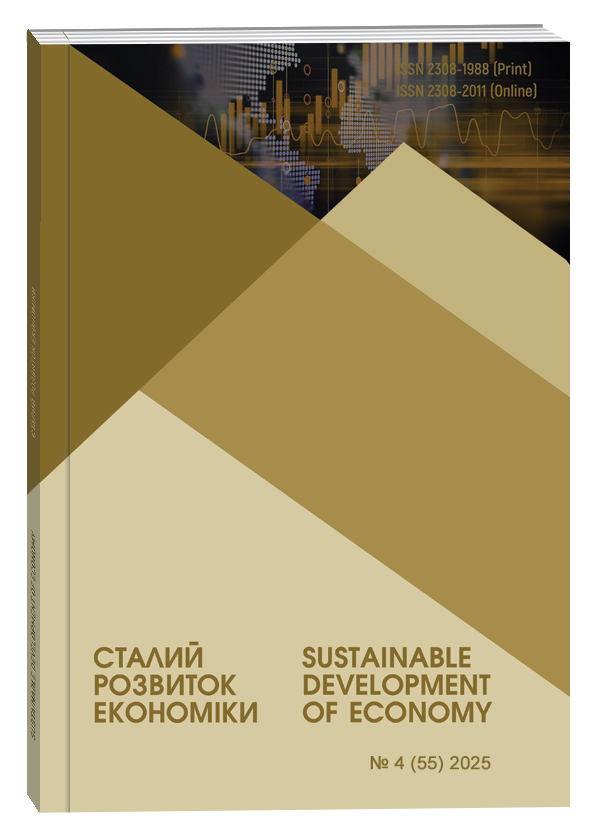DEVELOPMENT OF A TOOLKIT FOR MEASURING THE BANK'S RISK PROFILE
Abstract
The article is devoted to an overview of the significant risks of banks and existing approaches to their measurement. Attention is paid to credit, interest, market, operational and liquidity risks. To calculate liquidity risk, several variants of the VaR method for estimating the volatility of model parameters were considered. For interest rate risk, an estimate of the change in the economic value of the bank's capital and the value of the bank's net interest income were used. The article also presents approaches to modeling operational risks. Credit risk is the most formalized and can be used as the basis for forming an aggregated approach. Each bank develops its own models and methods of risk assessment, adapting them to the specifics of the business model. The calculation of a bank's risk profile depends on the nature and volume of its operations, the characteristics of its banking products and its customer base. Some approaches to assessing individual risk categories only examine the parameters that describe that risk. To calculate the risk profile of banks, it is necessary to aggregate data on possible losses from significant risks in monetary terms. Risk assessment is an important component of the bank's risk management system. For the coordinated interaction of all links, it is important for the bank to ensure a reasonable calculation of risk and risk appetite, which sets the maximum limit for possible losses. The system of control indicators and limits for risk management is based on risk profile calculations. Improving risk management methods and models is an important scientific and practical problem. To improve the tools for measuring a bank's overall risk profile, it is necessary to combine banks that are homogeneous in terms of the structure of assets, liabilities, income, expenses, and qualitative characteristics. The method of structural-functional groups of banks using Kohonen self-organizing maps is presented. This method allows you to assess the specifics of banking risks at a certain period of system development, identify market participants with similar characteristics, and compare your own risk management strategy with others.
References
Basel Committee on Banking Supervision. Principles for Effective Risk Data Aggregation and Risk Reporting. Bank for International Settlements, 2013. URL: https://www.bis.org/publ/bcbs239.htm
Положення про організацію системи управління ризиками в банках України та банківських групах. Постанова Національного банку України від 11.06.2018 № 64. URL: https://zakon.rada.gov.ua/laws/show/v0064500-18#Text.
Управління ризиками банків: монографія у 2 томах/ А.О. Єпіфанов, Т.А. Васильєва та ін. Суми : ДВНЗ «УАБС НБУ», 2012. 283 с.
Crouhy, M., Galai, D., & Mark, R. The Essentials of Risk Management (2nd ed.). 2014. McGraw-Hill Education.
Hull, J. C. (2018). Risk Management and Financial Institutions (5th ed.). 2018. Wiley.
Карчева Г.Т. Використання VAR-методології для оцінки ризику ліквідності банків. Вісник УАБС. 2008. № 1. с. 59-64.
Примостка Л. О. Управління банківськими ризиками : навч. посібник. Київ : КНЕУ, 2007. 600 с.
Положення про визначення банками України розміру кредитного ризику за активними банківськими операціями. Постанова Правління НБУ від 30.06.2016 № 351. URL: https://zakon.rada.gov.ua/laws/show/v0351500-16#Text
Заруцька О.П., Новікова Л.Ф., Балякін Д.В. Структурно-функціональний розподіл ринку банківських послуг України. Науковий погляд: економіка та управління. 2024. № 4 (88). с.110-120. DOI: https://doi.org/10.32782/2521-666X/2024-88-14
Basel Committee on Banking Supervision. Principles for Effective Risk Data Aggregation and Risk Reporting. Bank for International Settlements, 2013 Available at: https://www.bis.org/publ/bcbs239.htm
Polozhennya pro organizaciyu systemy upravlinnya ryzykamy v bankax Ukrayiny ta bankivskyx grupax [Regulations on the organization of the risk management system in banks of Ukraine and banking groups]. Postanova NBU vid 11.06.2018 No 64. Available at: https://zakon.rada.gov.ua/laws/show/v0064500-18#Text
Yepifanov A. O., Vasylieva T. A. (2012) Upravlinnia ryzykamy bankiv: monohrafiia u 2 tomakh. [Bank Risk Management. Monograph in 2 Volumes]. Sumy: SHEI "UABS NBU". 283 р.
Crouhy, M., Galai, D., & Mark, R. (2014) The Essentials of Risk Management (2nd ed.). 2014. McGraw-Hill Education.
Hull, J. C. (2018). Risk Management and Financial Institutions (5th ed.). Wiley.
Karcheva H. T. (2008) Vykorystannia VAR-metodolohii dlia otsinky ryzyku likvidnosti bankiv. [Using VAR methodology to assess banks' liquidity risk]. Visnyk UABS. No. 1. р.59-64.
Prymostka L. O. (2007) Upravlinnia bankivskymy ryzykamy [Banking Risk Management]. Kyiv: KNEU,. 600 p.
Polozhennia pro vyznachennia bankamy Ukrainy rozmiru kredytnoho ryzyku za aktyvnymy bankivskymy operatsiiamy. [Regulations on determining the amount of credit risk by Ukrainian banks for active banking operations.] Postanova NBU vid 30.06.2016 No. 351. Available at: https://zakon.rada.gov.ua/laws/show/v0351500-16#Text
Zarutska O. P., Novikova L. F., Baliakin D. V. (2024) Strukturno-funktsionalnyi rozpodil rynku bankivskykh posluh Ukrainy. [Structural and functional division of the banking services market in Ukraine]. Naukovyi pohliad: ekonomika ta upravlinnia. 2024. № 4 (88). с.110-120. DOI: https://doi.org/10.32782/2521-666X/2024-88-14


